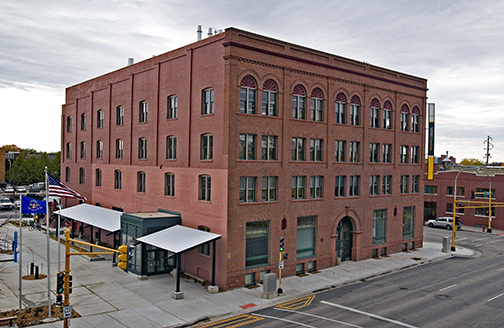The architect must combine an understanding of society, artistic skill, and technological knowledge to shape places and spaces that enrich human life. Not only do the physical requirements need to be satisfied, but also there must be beauty to engage the human spirit. All of this requires a creative thought process that can balance and organize needs that are quite varied in nature. Clear, responsible, sensitive, and comprehensive thinking is demanded of the architect who is to integrate a wide range of factors into a design that is meaningful. For this reason an architect’s education must range from the practical aspects of building construction to the study of environmental, social, and aesthetic issues.
Central to the study of architecture is the sequence of architectural studio courses. Students are assigned architectural problems, which may be hypothetical, realistic, or theoretical, and find their own solutions to them with frequent individual consultations with instructors. As the student progresses, the projects become larger and more complex or the solution becomes more detailed. In this way, knowledge and experience acquired in other classes are brought to bear on the principal responsibility of the architect and the architecture student, that of shaping separate considerations into a single design.
Selective Admission
Admission into the first-year pre-architecture program is open to any student enrolled at NDSU. Transfer students are evaluated on the basis of courses taken and grades received. Upon completion of the first year, a selected number of students are admitted to the second year of the program on the basis of institutional GPA attained and performance in first-year environmental design courses.
The Program
At the end of the third year of study, students may apply to the Master of Architecture degree program. The Bachelor of Science in Architecture is granted after the fourth year of study, and the professional Master of Architecture degree at the end of the fifth year of study. The program is fully accredited by the National Architectural Accrediting Board, and the M.Arch. degree is recognized by the National Council of Architectural Registration Boards as a professional degree.
The total number of credits required for the professional degree is 168, and the bachelor degree requirement is 136.
Special Notice
Students who are admitted into the second year of the program will be required to purchase a laptop computer before the beginning of the spring semester. Information on type of computer, software, purchase, and financing arrangements will be distributed to admitted students prior to purchase.
Plan of Study
IMPORTANT DISCLAIMER: This guide is not an official curriculum. This guide is a sample four-year degree plan of how students might plan this major with other degree requirements to complete their education in four years.Student plans will vary from this sample due to a variety of factors, such as, but not limited to, start year, education goals, transfer credit, and course availability. To ensure proper degree completion, enrolled students should utilize Degree Map and Schedule Planner in Campus Connection and consult regularly with academic advisors to ensure graduation requirements are being met.

